I had no plans to visit the city of Syracuse when I headed for Sicily. I wanted to experience the Good Friday Procession in Taormina, and perhaps take a tour to the top of Mount Etna, but as for other destinations, I’d figure it out along the way, as usual. Sure enough, on the train from Naples to Sicily I met a couple of women who were on their way to Siracusa, as they called it. Both had emigrated to the United States many years ago and spoke perfect English, but they had been born and raised in Syracuse and were traveling back home to visit family. For half an hour they spun tales about the gorgeous Baroque churches, ancient Greek and Roman ruins, fresh markets, and mouthwatering food in their home town. I was hooked!
Two weeks later I stepped off the train and walked half a block to LOL Hostel, a warm and welcoming hostel in Syracuse that was ideally located midway between the city’s two most important attractions, the Archeological Park and Ortygia Island. The next morning I crossed the harbor bridge leading to the island and stopped in front of the Temple of Apollo, Sicily’s most ancient Greek temple and the second oldest in the world. Constructed in the 6th century B.C., at the point when Greek architecture was transitioning from wood to stone, its narrowly spaced Doric columns were revolutionary, if not experimental. Indeed, an inscription on the top step on the eastern facade lauds the temple’s unique construction:
“Kleomenes, the son of Knidieides built it for Apollo. And he put his hand to the columns; beautiful accomplishments they are.”
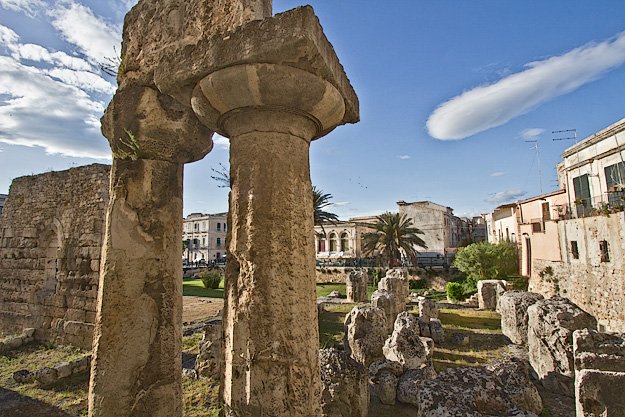
There could hardly be a better symbol for Syracuse than the Temple of Apollo. Syracuse was founded in 734 B.C. on the island of Ortygia by the Greek city/state of Corinth, at a time when the Greeks were colonizing locations around the Mediterranean. For more than 400 years, during periods of democracy as well as rule by a series of Greek tyrants, Syracuse prospered and gradually extended its influence over much of Sicily and southern Italy. The situation finally changed in the third century B.C., when Rome battled the Phonecians of Carthage, who had long barred them from seafaring trade in the western Mediterranean. Sicily became the battleground and Rome eventually won the day, claiming Sicily as a spoil of war in 211 B.C. Roman Syracuse became the provincial capital of Sicily and a significant center of Christianity until A.D. 878, when the city was conquered by Muslims. In 1038 the city was recaptured by the Byzantine Empire (Greek speaking Romans), but just 47 years later the Normans conquered Sicily. Over the next few centuries, control of Syracuse flip-flopped between Romans, Genoese, French, and Spanish interests, until Sicily finally won independence in 1848. Throughout its tortured history, the Temple of Apollo has been used as a Byzantine church, an Islamic mosque, a Norman Church, Spanish barracks, and was even converted to private houses at one point. I stood at the edge of the excavation pit, marveling that any part of it had survived intact.

Deeper within the Old City I found another survivor. In the center of Piazza Duomo, a pedestrian square extolled as the most beautiful in all of Italy, stood the Syracuse Cathedral. The lavish Baroque facade left me unprepared for an interior that was architecturally more pagan than Christian. Built atop the ancient Greek Temple of Athena, the cathedral incorporated the original Doric columns into its exterior walls and arches were cut into the walls of the temple’s inner chamber to form the nave. Like the Temple of Apollo, the cathedral was used as a mosque in the 800’s until being reconsecrated by Normans, who decorated the walls of the nave with mosaics that are still visible today. The cathedral’s Baroque makeover did not happen until the early 18th century, following the earthquake of 1693, which caused the facade to collapse.
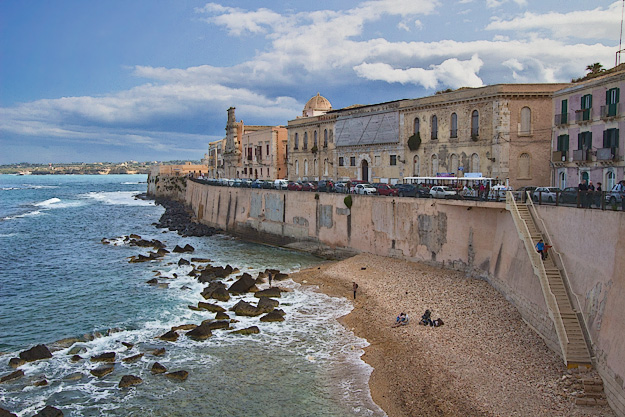
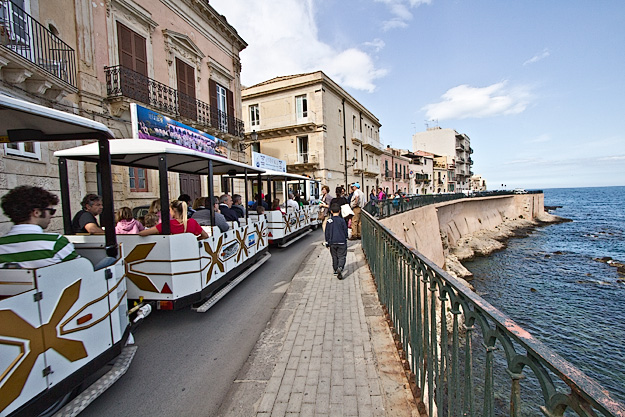
Some mornings I strolled Ortygia’s long seaside avenues, strung with pastel houses that gazed over an impossibly blue Mediterranean. During the hot midday sun I escaped to the narrow cobblestone lanes of the Jewish Quarter or rested my aching feet while consuming endless thimble-sized cups of Italian espresso in sidewalk cafes that were scattered liberally through the Old City.
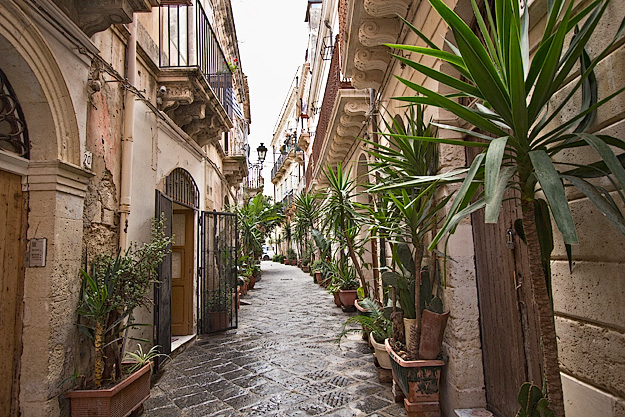
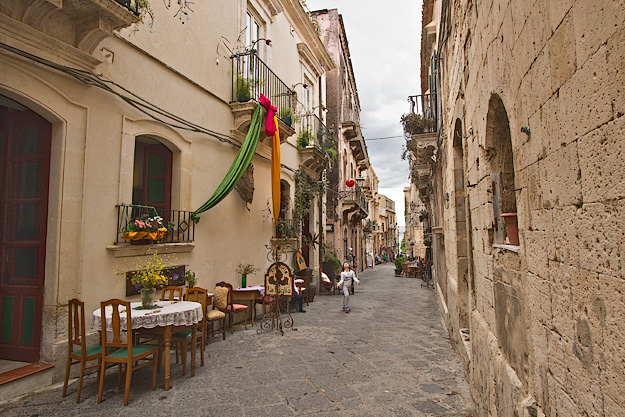
Near the entrance to Ortygia Island I munched my way through the market each morning, sampling Sicilian artisan cheeses, olives, and foccaacia. Every evening I feasted at a different trattoria, gorging on local delicacies that, like Sicilian architecture, are a fusion of many cultural influences. Arancini (deep fried rice balls stuffed with cheese) are said to have originated in the 10th century during Arab rule, and pesto gnocchi (potato dumplings in a thick cream sauce that still sets my saliva glands watering when I think about it) was most likely introduced by the Romans.
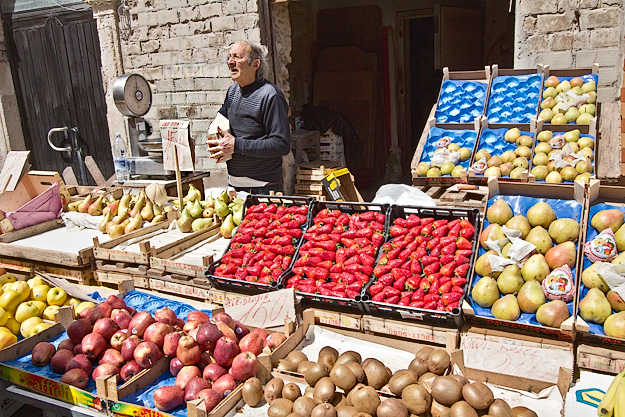
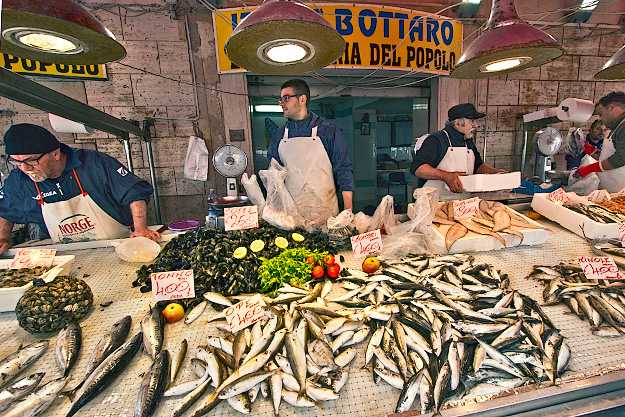
It was hard to tear myself away, but I couldn’t leave Syracuse without visiting its other great attraction, so on my final day I headed to the Archeological Park of Neapolis, where I witnessed yet another collision of Roman and Greek cultures. Built in the 5th century B.C., the Greek Theater was the largest of its type in the western Mediterranean. Though immense, what remains today is only the lower part of the original facility, which was hewn from limestone rock in situ. In its day, giant stone blocks would have ringed the upper levels of the natural hillside into which the theater had been embedded. Considering that it is more than 2,500 years old, it is quite remarkable that the names of King Hieron II and members of his family can still be seen carved into some of the first-row seats, and that the theater is still used for presentations of the Greek tragedies of Eschilos, Sophocles, and Euripides each spring. High above the theater, an artificial grotto known as the Nymphaeum was carved into the limestone cliffs, as if to honor the muses with an eternal view of the performances.
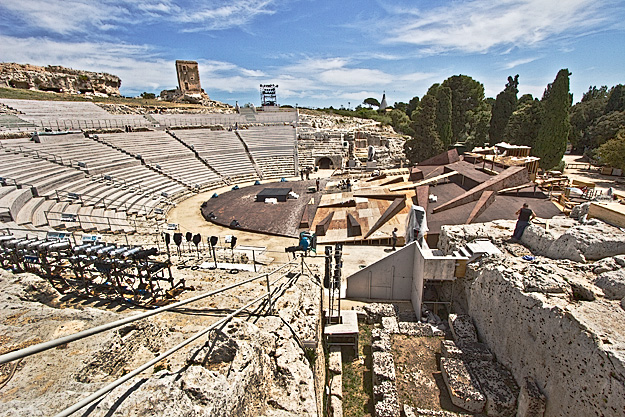
At the Roman Amphitheater on the other side of the park, I grimaced when I read that slaves had been thrown into the ring with savage animals for sport, but my visit to the great stone quarry below the Amphitheater was even more unsettling. I breathed in the scent of heavily laden orange trees as I strolled down paths shaded by overarching bamboo trees, trying to pinpoint the sound of singing. My search dead-ended at a soaring rock wall, where a teardrop shaped opening led into a deep S-shaped cavern known as the Ear of Dionysius. Inside, one small girl stood facing the wall, quietly singing the opera I had heard from halfway across the park. According to legend, the tyrant Dionysius, who ruled Syracuse from 405 to 367 B.C., capitalized on these perfect acoustics; he imprisoned his enemies in the cave so that he could stand outside and overhear everything they said.
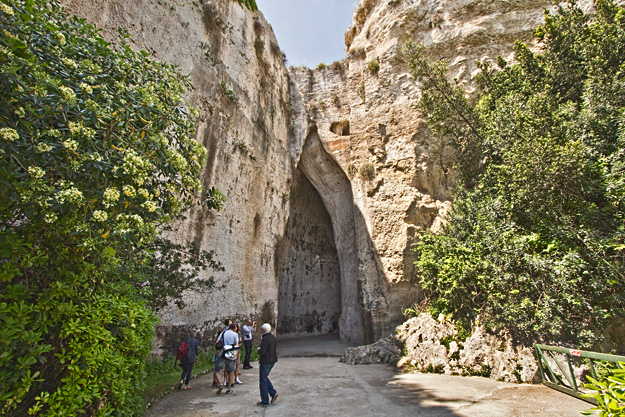
On my final day in Syracuse I made one last foray into Ortygia. On one of the pocket beaches that dot the coast I picked up pieces of wave-smoothed sea glass and shoved them in my pocket. Back at Piazza Duomo, as the setting sun turned the palaces and churches on the square to pure gold, I sipped one last espresso and spread my collection of sea glass on the table. The amber, milky, dark green, lime green, brown, blue, and turquoise pieces seemed appropriately symbolic of multi-cultural Syracuse. Individually they were pretty but together they made an exquisite rainbow.

ALMOST WENT THERE BUT COULD NOT CONVINCE WIFE ABOUT SAFETY SINCE WE HAD BEEN TOLD IN NAPLES ABOUT THE GANGS OF KIDS WHO PREY ON TOURISTS. DID YOU EXPERIENCE ANY SIGNIFICANT CRIME? WE LIVED IN SPAIN FOR OVER TWO YEARS AND THE GYPSIES WERE NOT THAT BAD OTHER THAN PICKPOCKETING.
Hi Oscar: In the past nine years of traveling, I cannot count the number of times I heard rumors about how dangerous a place was and how I should not go there. With the exception of war-torn countries, I have found that these rumors are always exaggerated. If I listened to them all, I would not have gone anywhere. I went to Naples, alone. I had absolutely no problem. Just use common sense and be aware of what is going on around you at all times. I have been targeted by pickpockets twice and thwarted them each time because I was aware of what was going on. And, BTW, in case no one has ever told you before, writing in all capital letters is considered “yelling” and is not recommended.
Everywhere in this city is beautiful. I like all of the scenery. Italy has the most famous Renaissance buildings in the world. That is a place I have always wanted to see!
Hope you get to visit Syracuse one day, Hatako. It is definitely a gorgeous city.
Thank you so much for your informative post.
You’re very welcome, Joy. Glad you enjoyed it.
I think every tourist have his plan. Without planing nothing can be happened, So every tourist have to do that. Again we can realize that planing is really needed for the tourist. Thanks to the author for shearing with us. 🙂
Actually planning a visit to Syracuse. looks like an interesting addition to the trip. BTW, recommended this post by Ali (above).
Thanks for letting me know how you found my blog, Tom. Ali is a good friend and a terrific travel writer in her own regard. I’m sure you’ll love Syracuse. Be sure to try the Aranccini and the Gnocci with pesto cream sauce.
Fascinating and Breath taking views! I just love to wander around the alleys and when I get tired I’ll just sit on a fancy restaurant and have a cup of tea and some chocolate/cheese cake. Sicily is now going to be part of my travel list. Thanks for sharing!
You’re very welcome, Cristy. I hope you do make it to Sicily, as it’s a wonderful destination.
I was already really looking forward to visiting Syracuse, but now I’m even more excited! Sounds like such a wonderful and gorgeous city. I love the mix of cultures and all the different ruins. Thanks for sharing, Barbara!
Ali, I can’t wait to hear your impression of Syracuse! Have a wonderful trip.